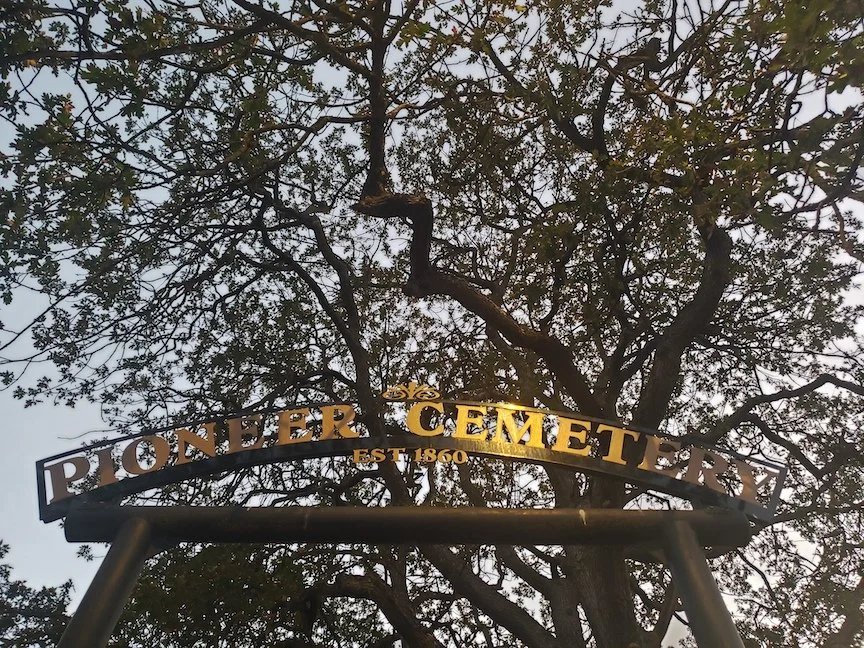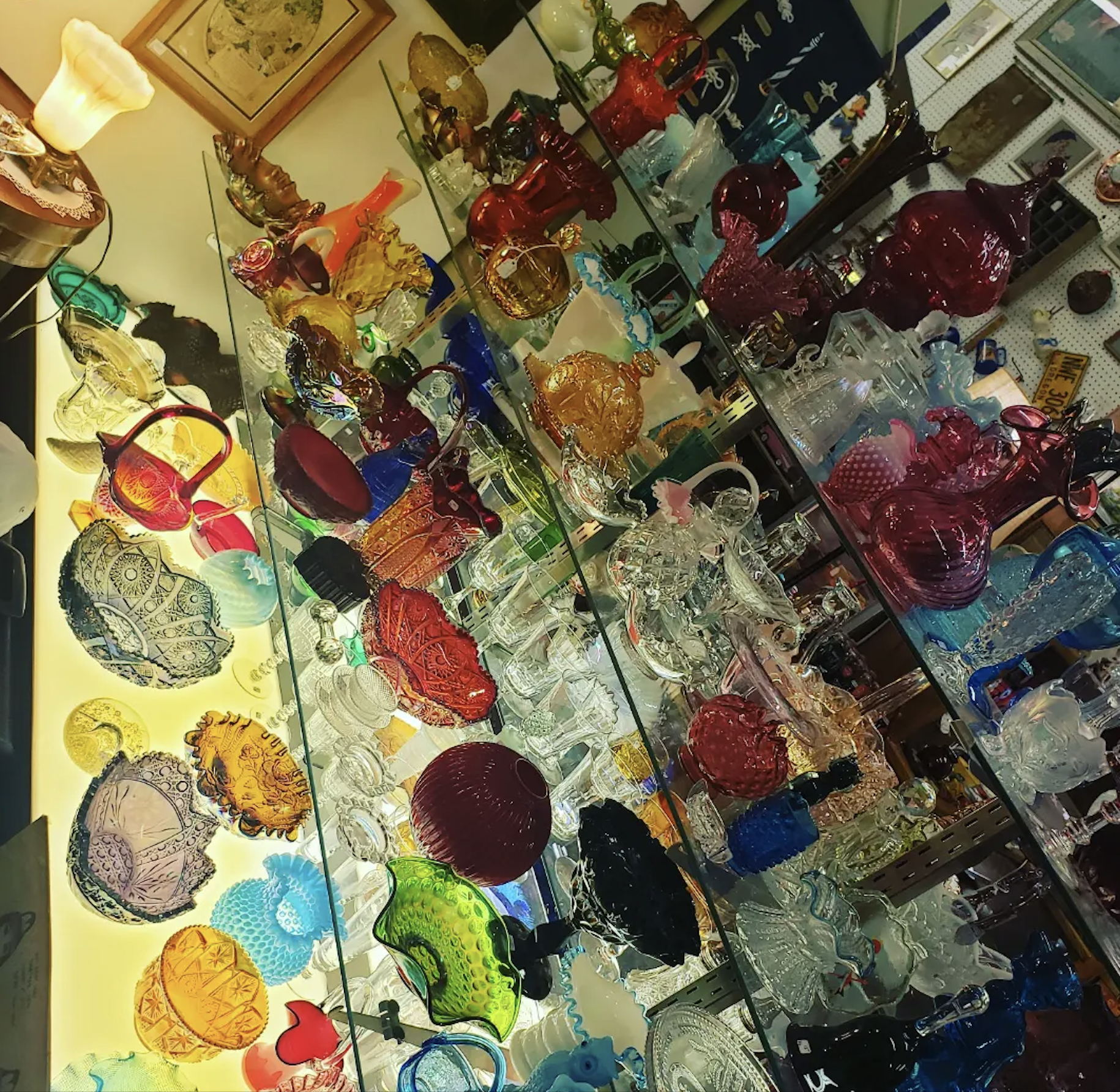Walk of the Town: City-wide walking tour allows residents and visitors alike to celebrate art, history, and what makes The Dalles unique
By Sarah Cook
Author’s Note: Otocast, a digital platform that provides location-based audio guides, is available for download as an app on all devices. Visit otocast.com to learn more.
With the announcement of the All Together The Dalles book publication and accompanying guided audio experience, I knew it was time to revisit my CCC series on walking. And since I find myself downtown every weekend exercising at my new favorite hangout, StudioFit, I decided one Saturday morning that I would change out of my workout clothes, launch the Otocast app, and begin the guided tour where I already was.
The All Together The Dalles mural, located on the eastern end of downtown 2nd street, is part of a larger multi-media project aimed at celebrating our local community.
“We are excited to expand the All Together The Dalles project to include a Walking Tour app,” says Scott Stephenson, Executive Director of The Dalles Art Center. “Working with Dawn Hert (formerly with the Community Development Department), we were able to combine grant funding from the State Historic Preservation Office and the Wasco County Cultural Coalition to bring this great asset to the community.” Stephenson notes that they’re still adding locations to the app (at the time of writing this, I count 63), including additional historical buildings and the newest round of Wall Dog murals. In the end, more than 70 points of interest and 24 murals will be featured.
As I begin my tour, the first thing I realize is that you can’t discuss buildings, particularly from a historical perspective, without running into a uniquely lush and unfamiliar vocabulary. Listening to a kind voice narrating details about the Tony’s building, aka the Walther-Williams Hardware Company, located at Federal and 2nd Street, I hear about things like “basalt lintels” and “raised brick quoins” and “drip frieze course and dentils.” Everything sounds a little like food to me—though this may say more about how challenging barre was this morning.
“The Dalles Beautification Committee is currently making good use of the empty display windows in the Walther-Williams Hardware Company building.”
The app points out where structures have maintained their historic features—in the case of the Tony’s building, the alley side “remains close to its 1910 original condition,” which includes “tall arched windows and iron shutters.” I also learn that the original second-floor apartments, recently renovated and branded as the “Federal Street Lofts,” used to be split-level, with a “cubbyhole” bed located beneath a small upstairs room, which means residents had to unfold their bed into the living room when they were ready to go to sleep!
As I make my way east, I pass by the historic Milne Buildings—currently occupied by Westwind Frame & Gallery and Yesterday & Today Music—as well as the Independent Order of Odd Fellows building, or the I.O.O.F.
The modest I.O.O.F. sign. Pioneer Electric currently resides in this cool building, located on 2nd and Laughlin.
Through the app, I learn that the partial restoration that occurred back in 2014 “revealed a marble base on the 2nd Street side that was previously hidden under layers of paint." I also learn that the post office used to be located within this building before getting its own in 1915, and that other past tenants include a dentist’s office and a Montgomery Ward.
There’s not enough info on the app for me to wrap my feminist brain around the concept of fraternal organizations such as the I.O.O.F., and a quick jaunt on Wikipedia confirms that, like many other “secret societies" of its kind, its original membership was limited only to white men. (A “female auxiliary” branch, known as the Rebekahs, was founded a little over 30 years after the original formation.)
The I.O.O.F. still functions today, and while there are details on their website that peak my interest (including a mission statement that indicates inclusivity for all, “regardless of race, nationality, religion, social status, gender, rank and station,” as well as a bright red button that reads, “Are you odd enough?”), I have a hard time ditching the impression that such organizations remain exclusive and problematic, so I return to the app. Otocast refers to the group’s “concern for common folks,” which led to their sponsorship of a few local cemeteries. The app names two in particular: Sunset Cemetery on Cherry Heights, and Park Lawn Cemetery (as it was previously called) on Three Mile Road. But it’s actually the Pioneer Cemetery, located just 4 blocks from where I live and constituting my regular shortcut between my house and Sorosis Park, that remains my favorite cemetery in town.
Later that evening, I took a walk through Pioneer Cemetery and came to the solid conclusion that I am, in fact, odd enough.
It’s not long before I find myself standing between Stadelman Ice House—aka Sedition Brewery—and the colorful mural that envelopes The Hub storage facility. Though my imagination is quick to wonder whether The Dalles ever had its own Little Antarctica, so to say, I immediately learn that the building is actually where brothers Peter and Joseph Stadelman used to cut and store ice during the wintertime, which they would sell during the summer months. The three-foot-thick walls that remain on the corner of 1st and Laughlin certainly helped with their endeavor. Though Sedition is currently closed, owners Aaron and Kelly Lee confirm that the building is an excellent location for cold work: “We get really consistent temperatures in the brewing and keg storage areas. When it’s 110 degrees outside, it’s mid-60’s in here.”
Sedition Brewing Co., aka the Stadelman Ice House.
It’s at this point of my walking tour that I run into Jeff and Debbie, two Portland residents who visit The Dalles two or three times a year. A little camera-shy despite their friendliness, they insist that I don’t need to take their picture and should “focus on the murals instead.” So I do, gazing back and forth between the giant sturgeon and the red-winged blackbird and Jeff and Debbie’s glowing faces. They’d caught my attention because they looked like they were doing the same thing as me—gazing upwards at old buildings—but on manual scooters (“so that it counts as exercise,” they enthusiastically explain).
Details from The Hub mural, standing in for Jeff and Debbie.
Debbie mentions her familial connection with the town, including details about her German ancestry and some distant relatives who helped build the dam. But beyond the ancestral thread, I find myself mostly curious about one thing: what keeps them coming back to The Dalles? “Hood River is where the tourists go,” Debbie asserts, and when she goes on to refer to The Dalles as a working city—“not presumptuous”—I think I know exactly what she means. There’s something grounding about being here, not because the city isn’t without problems or lamentable absences, but because there’s an as-is quality to the town, one that makes you feel like you can catch your real breath for a moment. “[The Dalles is] just here, being part of current history,” she continues, and her matter-of-fact tone belies a glimmer of something slightly more poetic.
A study of The Dalles quickly becomes a no-nonsense, and yet quite joyful, study of color.
I consider the way I feel every time I open my Instagram app. I consider the way I feel standing here in the sun, chatting with two kind strangers and equally surrounded by bright dizzying colors and dilapidation; by signs, structures, and works of art made through both past efforts and recent ones. For an odd moment, I think I may never look at social media ever again.
Instagram, Schminstagram. These details are from The Hub building and Red Wagon Antiques, the latter of which was a quick pit stop on my walk. While browsing the used postcard session—aka my happy place—I overheard some lovely women discussing their temperamental terriers.
I hardly make a dent in what the walking tour has to offer before deciding it’s time to meander in the direction of home. But even after closing the app and putting my headphones away, I notice something different about, well, my noticing. Has that door always looked like that? Why haven’t I seen these tiles before? How long has “Bird in Basalt” been there?? The funny thing about taking a guided tour of the city you already live in is that it might make you feel like a visitor, like you’re pretending to not be from around here. As it turns out, pretending to not belong to a place is a really nice way of remembering that you do.
she/her (why pronouns matter)sarahteresacook.comRead For the Birds, a monthly newsletter
















